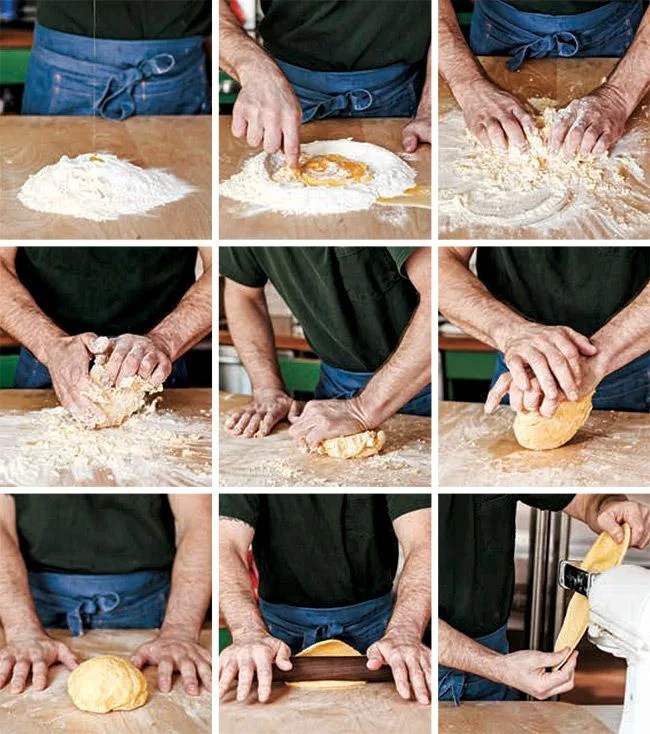Pasta isn’t the first thing that comes to mind when you think of warm-weather food. But it is what comes to mind when you think of good food. Those two ideas intersect in this light dish from Marc Vetri’s new cookbook, Mastering Pasta: The Art and Practice of Handmade Pasta, Gnocci, and Risotto, which came out in March 2015. Vetri, who is a James Beard Award-winning chef and owner of six restaurants in Philadelphia, shared the recipe for his basic pasta dough and farfalle with chorizo and favas. – Gear Patrol
For the record, the Italian word farfalle means “butterflies”, not bow ties. And homemade farfalle are softer and more delicate than dried ones, so they need a lighter sauce. This one works great because the favas and bits of chorizo get caught up in the folds of the pasta. In this dish, I prefer the smooth texture of Pantaleo cheese, a hard, aged goat cheese from Sardinia. Look for Pantaleo at cheese shops or well-stocked supermarkets such as Whole Foods. Or substitute fiore sardo or another aged, firm goat’s or sheep’s milk cheese for grating. — Marc Vetri
Pasta Swap
Even though this sauce has bits of sausage and beans, the overall taste is light and fresh. Fazzoletti or fettuccine would work well here.
Makes 4 Servings
Ingredients:
1 1/2 pounds (680g) young fava beans in the pod
8 ounces (227g) egg yolk dough (see next page), rolled into sheets about 1/8 inch (3 mm) thick
12 ounces (340g) Spanish chorizo
1/4 cup (60ml) olive oil
1/3 cup (56g) finely chopped yellow onion
1 cup (113g) grated Pantaleo cheese
Kosher salt and freshly ground black pepper



